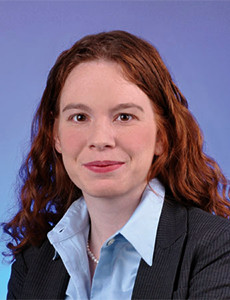Heart disease in women is a bigger deal than most think
- Category: Blog, Heart, Women's Health
- Posted On:
- Written By: King's Daughters Health
A recent study showed that women are beginning to recognize that heart disease is a major threat to them on the whole (54 percent knew it was the No. 1 killer of women in the U.S.). But only 13 percent said they were personally worried about their risk.
 “I think a lot of women are shocked when they find out they are at risk,” said King’s Daughters cardiologist Jennifer Listerman, M.D.
“I think a lot of women are shocked when they find out they are at risk,” said King’s Daughters cardiologist Jennifer Listerman, M.D.
“Women definitely have heart disease,” she said. In fact 90 percent of women in the U.S. have at least one risk factor for the disease and many have multiples, according to the U.S. Centers for Disease Control and Prevention. These include:
- High blood pressure
- High LDL cholesterol
- Smoking
- Family history
- Preeclampsia during pregnancy
- Age (55 or older)
Diabetes, poor diet, being overweight or obese, physical inactivity and excessive alcohol use also increase risk of heart disease.
Getting women to recognize their personal risk and take action can be a challenge for many reasons, Dr. Listerman said. One issue is women tend to develop heart disease several years later than men. This may lull some into believing that heart disease doesn’t affect women. Why women develop symptoms and have heart attacks later in life isn’t entirely clear, Dr. Listerman said, but researchers suspect it’s due to hormonal levels before and after menopause.
Women also tend to experience heart attacks differently than men. They may have the classic “as-seen-on-TV” heart attack, complete with crushing chest pain. But many don’t. Often their heart attacks are more subtle, with vague symptoms such as fatigue, shortness of breath or just not feeling well. Nausea, stomach discomfort, and sweating may also occur.
“The challenge is that symptoms can be very variable,” Dr. Listerman said. In the early stages, chest pain or discomfort (angina) tends to come on with activity and get better with rest. Typically, the angina lasts more along the line of minutes or seconds. At this stage, the heart muscle hasn’t suffered any damage.
With a heart attack, symptoms are not as closely tied to activity. Symptoms last longer and won’t go away, at least without intervention. “Eventually, the heart muscle that isn’t getting good blood flow will die and so the symptoms do eventually stop,” she said. “At that point, there’s been substantial damage done to the heart that cannot be undone.” This is an important point – heart muscle does not regenerate or regrow. Once it has died, it is gone, permanently impairing the heart’s ability to do its work.
The American College of Cardiology recently reported that women, on average, delay seeking medical care for heart attack by 37 minutes, much longer than men. “Usually it seems like, 37 minutes – how big a deal is that? But time is muscle,” Dr. Listerman said. The goal is to get blocked arteries open as quickly as possible, preferably within 60 to 90 minutes. “So 37 minutes is a pretty big chunk of time.”
The consequences of delaying care can be huge. Women don’t do as well after a heart attack as men do. Because they are generally older when they have that first heart attack, their physical health may not be as good. They typically have to stay in the hospital longer, and are more likely to die before leaving. It’s unclear exactly why this is so, but researchers theorize it’s because risk factors, such as diabetes and high blood pressure, have gone undiagnosed and untreated for years.
And women’s smaller anatomical features – smaller hearts, smaller chambers, thinner chamber walls, smaller blood vessels – along with differences in way their hearts function can create more treatment challenges. All of these issues make it even more imperative for women to seek care at the very first sign of trouble, not later.
It’s not exactly clear why women delay seeking care as long as they do. Of course, there are problems in recognizing personal risk, figuring out your symptoms, and realizing how serious things are. There is also the tendency among women to worry about others more than themselves.
“They worry about who will take care of the kids and grandkids, how their being sick will affect co-workers, spouses and others. I understand completely where they are coming from. So many folks don’t have time to be sick. They have other folks depending on them. But the problem is, you can’t help other people if you’re not around. And it’s hard to help other people if you are so limited in your activity because of permanent damage done to your heart,” she said.
“It’s really like they say on the airplane, you have to secure your own oxygen mask first before you can help other people.”
It’s something women need to take to heart: “The people who depend on you, need you there. They care about you, they want you there, and they want you to seek care if you need it.”
And as for inconveniencing cardiologists, nurses or others, that should never be a concern. “The best case scenario is if we have folks in the ER and I can come in and say I have good news, you’re not having a heart attack.
“That’s so much better than folks trying to tough it out at home, or caring for the kids, or at work, and there’s damaging being done to the heart that can’t be undone,” she said.

